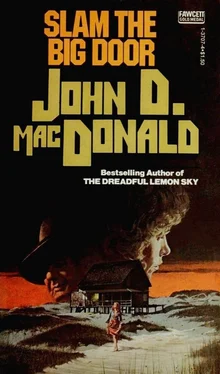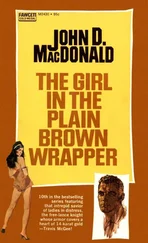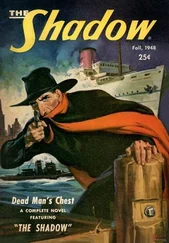John MacDonald - Slam the Big Door
Здесь есть возможность читать онлайн «John MacDonald - Slam the Big Door» весь текст электронной книги совершенно бесплатно (целиком полную версию без сокращений). В некоторых случаях можно слушать аудио, скачать через торрент в формате fb2 и присутствует краткое содержание. Город: Greenwich, Год выпуска: 1960, ISBN: 1960, Издательство: Fawcett Gold Medal, Жанр: Современная проза, на английском языке. Описание произведения, (предисловие) а так же отзывы посетителей доступны на портале библиотеки ЛибКат.
- Название:Slam the Big Door
- Автор:
- Издательство:Fawcett Gold Medal
- Жанр:
- Год:1960
- Город:Greenwich
- ISBN:978-0-449-13707-9
- Рейтинг книги:3 / 5. Голосов: 1
-
Избранное:Добавить в избранное
- Отзывы:
-
Ваша оценка:
- 60
- 1
- 2
- 3
- 4
- 5
Slam the Big Door: краткое содержание, описание и аннотация
Предлагаем к чтению аннотацию, описание, краткое содержание или предисловие (зависит от того, что написал сам автор книги «Slam the Big Door»). Если вы не нашли необходимую информацию о книге — напишите в комментариях, мы постараемся отыскать её.
Before the story is done, the pulse has run wild...
Slam the Big Door — читать онлайн бесплатно полную книгу (весь текст) целиком
Ниже представлен текст книги, разбитый по страницам. Система сохранения места последней прочитанной страницы, позволяет с удобством читать онлайн бесплатно книгу «Slam the Big Door», без необходимости каждый раз заново искать на чём Вы остановились. Поставьте закладку, и сможете в любой момент перейти на страницу, на которой закончили чтение.
Интервал:
Закладка:
The two vehicles struck with such force that they both rebounded from the impact and came to rest, smoking, still aimed at each other, the DeSoto with its rear wheels in a shallow ditch on the south side of the road, the Mercury on the shoulder on the north side. By then, of course, the trade names of the vehicles were academic, the use of them a matter of convenience. As in all classic head-ons, most of the passengers remained with the vehicles. Directness of impact made the windshield the only exit route, a quick journey available only to the passenger beside the driver. The driver, with the steering column through his chest, and the motor in his lap, tends to remain in place. Also, in the classic head-on, there is a grotesque lack of damage to the rear half of each vehicle. From the midpoint forward, they were compacted, unrecognizable junk. From the midpoint to the taillights, they were quite obviously automobiles, but even in the undamaged rear it was possible to detect startling evidence as to the force of impact. Taillight lenses were collapsed in upon themselves. Gas tanks mashed forward. Rear bumper braces compressed. Rear window glass hurled forward into the car. Dense objects in trunk compartments were hurled forward through the trunk compartment wall into the car’s interior. When the vehicles stopped with that ultimate abruptness, every loose or weakly braced object, every bit of bone, blood and tissue, strove mightily to continue forward at the unabated pace of approximately one hundred and thirty-five feet per second. This is approximately the initial velocity of a three-hundred-yard drive by Snead, and the initial impact flattens the dense ball to almost one half its normal diameter.
A man was hurled through the windshield of the DeSoto, a woman through the windshield of the Mercury. In delicate irony, after each vehicle had come to rest, the ripped and broken bodies of those ejected two each lay closer to the car in which they had not been riding. This momentarily confused the investigation until one trooper noted in the floodlight glare that a body can make skid marks, in blood.
Moments after the impact the DeSoto caught fire, and it burned briskly for over ten minutes before foam smothered the flames. By then there were four state patrol cars, two county cars, three ambulances, two wreckers and a fire engine at the scene, as well as approximately fifty spectators who had parked their cars along the shoulders. The red dome lights winked. The bright floods cast heavy shifting shadows. Men took flash photos. Other men stretched tape measures along the pavement and made computations. Another man was on the radio, relaying the Oklahoma and New York plate numbers to the message center to speed identification of the bodies. Newspaper reporters and photographers had arrived. The coroner arrived, stared, shrugged and went home. Troopers were sending the curious on their way — in lesser quantity than they were arriving — as the bodies were being loaded to be taken to the Police Morgue in Ravenna in the basement of the lab wing of the hospital. The first probable identification was made at the scene. A trooper, holding his breath, gingerly worked a wallet out of a hip pocket in the Mercury. The hip pocket was not where one would expect to find it. In fact, the hip was not where it should have been.
He held the identification cards to the light, then called his superior over. “Local guy, it looks like. Address on Riley Key.”
“Troy Jamison. Troy Jamison. I heard that name before. A builder. Or maybe he peddles real estate.”
“Line up forty guys around here and twenty of them peddle real estate.”
“Don’t get wise with me, Russ. Tell Harry to call this name and address and phone in and tell them to start checking. They all loaded? Okay, you wrecker guys! Hook up and roll ’em.”
Ten minutes later the long curve was once again empty and dark and silent. The infrequent car went by, taking the long curve unaware of the insignificant stains of blood, the discarded film wrappers.
The process of identification continued. It was a full twenty hours before the four occupants of the DeSoto were identified. Had one of them not been thrown clear it could have taken longer. They were all male, all in their middle twenties, all Puerto Rican, all migratory workers. The Mercury was not as difficult. After a Mr. Rodenska at the Jamison home came on the phone and was given a description of the car he suggested the other two occupants might be a man and woman living at Shelder’s Cottages on Ravenna Key. He gave the woman’s name as Miss Jerranna Rowley, and he knew the man only as Birdy. His physical descriptions and estimates of age matched the bodies well enough to warrant sending a team out to number Five. The number of the Oklahoma plates matched the nickel-notebook records maintained by Mrs. Shelder. The team reported back in, when they brought back all personal possessions from the cottage for official storage, that they had been unable to find any papers indicating blood relatives who could be contacted. As it so happened, Mr. Rodenska was then at the morgue, having brought Mrs. Jamison in to make the necessary official identification of her husband.
Fortunately for Mrs. Jamison, of the seven victims only Mr. Jamison had escaped extensive facial abrasions and lacerations. His face was distorted however, as though it were being viewed through a flawed pane of glass. A sheet covered the more serious damage. From the position of the body in the wreck it seemed possible that Jamison had been asleep in the rear seat at the moment of impact.
Rodenska brought the woman in and held her by the arm. She looked at the dead face. The lieutenant thought her face looked just as dead as his.
“Is there any special way I say this?” she asked calmly. “Any sort of legal formula?”
“No. Is that your husband?”
“Yes.”
“Thank you, Mrs. Jamison. That’s all we need. You can have your funeral director pick up the remains at any time.”
She turned away and Rodenska took her out. He took her to the car. She got in. “Are you all right?”
“Yes.”
“They want me to go back in there.”
“Why?”
“I don’t know. I won’t let them keep me long.”
He went back in. The lieutenant said, “I can only ask you to do this and you can say no. But can you try to give me a tentative on the other two? I’ll tell you they aren’t pretty.”
“I’ll give it a try.”
“Thanks. They’re back in here.”
The bodies lay stripped on the zinc slabs, side by side. He looked at a faded rose on a slack and ruptured biceps. And at the woman’s pale brown hair, long neck, meatiness of thigh.
“I’m positive,” he said. “Birdy and the Rowley woman.”
“Thanks,” the lieutenant said. As he walked back out with Mike he sighed and said, “We’ll check through the plates back with the Oklahoma people, and we’ll check the prints through the F.B.I. files, but on that pair I got a hunch it’ll end up no known relatives. There’s money enough on them to bury them and some left over, and so that’ll be stuck in escrow and their junk warehoused, and seven thousand years from now it’ll be turned over to the state.”
They had reached the outside door. Mike could see Mary sitting in the station wagon under the streetlight.
“They were all afternoon in a crummy joint ten miles east of where it happened, getting boiled. How come a guy like Jamison was running around with a pair like that?”
“I don’t know.”
“I knew you didn’t know. I’ll bet his wife couldn’t figure it. I bet even he didn’t know. You run into that every once in a while. A prominent man, he has to go off and get his kicks running around with trash. Funny thing when a man has everything.”
Читать дальшеИнтервал:
Закладка:
Похожие книги на «Slam the Big Door»
Представляем Вашему вниманию похожие книги на «Slam the Big Door» списком для выбора. Мы отобрали схожую по названию и смыслу литературу в надежде предоставить читателям больше вариантов отыскать новые, интересные, ещё непрочитанные произведения.
Обсуждение, отзывы о книге «Slam the Big Door» и просто собственные мнения читателей. Оставьте ваши комментарии, напишите, что Вы думаете о произведении, его смысле или главных героях. Укажите что конкретно понравилось, а что нет, и почему Вы так считаете.












